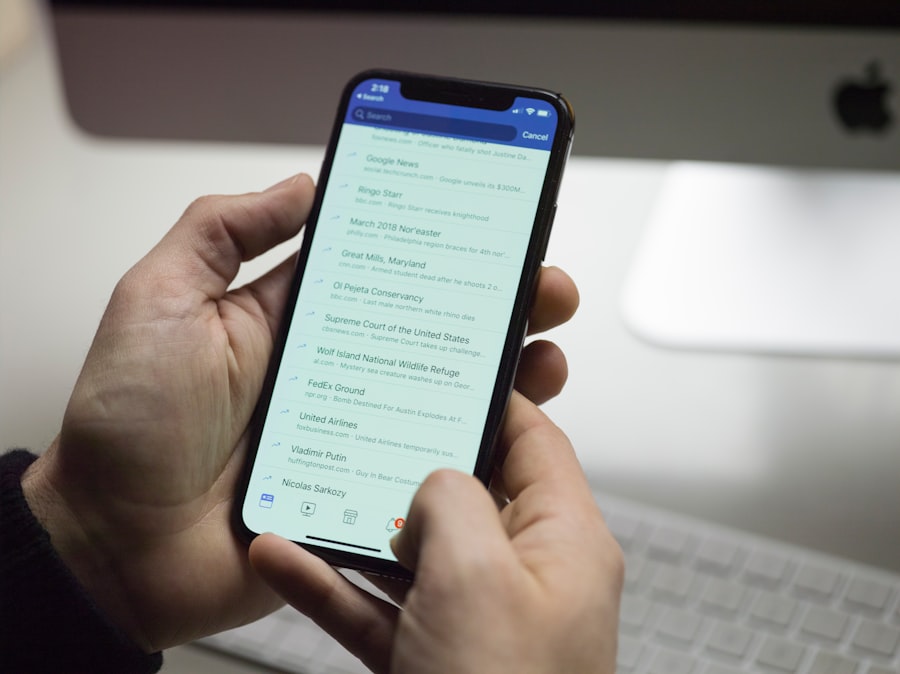
Flashcards have long been a staple in the realm of education, particularly for language learners and students aiming to enhance their vocabulary. Their effectiveness lies in their simplicity and adaptability, allowing learners to engage with new words in a dynamic manner. The act of writing down a word on one side of a card and its definition, synonyms, or an example sentence on the other creates a tactile learning experience that can significantly aid memory retention.
This method leverages the principles of active recall and spaced repetition, both of which are crucial for long-term retention of vocabulary. Moreover, flashcards can be tailored to fit individual learning styles and preferences. For instance, visual learners may benefit from incorporating images or color coding into their flashcards, while auditory learners might find it helpful to read the words aloud or use them in spoken sentences.
This versatility makes flashcards an invaluable tool for learners of all ages and backgrounds. By engaging with vocabulary through multiple senses, learners can create stronger neural connections, making it easier to recall words when needed.
Key Takeaways
- Flashcards are a powerful tool for building vocabulary and retaining new words.
- Effective flashcards for vocabulary mastery should be concise, clear, and focused on one word or concept.
- Mnemonics and visuals can enhance the effectiveness of flashcards in memorizing and recalling vocabulary.
- Contextual learning in flashcards, such as using sentences or images, can help reinforce understanding and retention of new words.
- Regular review and strategic use of advanced techniques, such as spaced repetition, can aid in expanding and retaining vocabulary with flashcards.
Creating Effective Flashcards for Vocabulary Mastery
The creation of effective flashcards is a critical step in the vocabulary-building process. To begin with, it is essential to select words that are relevant and useful to the learner’s goals. This could mean focusing on words that frequently appear in academic texts, professional jargon pertinent to a specific field, or everyday vocabulary that enhances conversational skills.
Once the target words are identified, the next step is to provide clear and concise definitions. A well-crafted definition should not only explain the meaning but also include nuances that differentiate the word from similar terms. In addition to definitions, including example sentences on flashcards can significantly enhance understanding.
These sentences should demonstrate the word in context, showcasing its usage in a way that is relatable to the learner. For instance, if the word is “ubiquitous,” an example sentence could be, “Smartphones have become ubiquitous in modern society, found in nearly every hand.” This contextualization helps learners grasp not just the meaning of the word but also how it functions within language. Furthermore, incorporating synonyms and antonyms can deepen understanding and provide additional pathways for recall.
Utilizing Mnemonics and Visuals in Flashcards

Mnemonics are powerful memory aids that can transform the way learners interact with vocabulary flashcards. By creating associations between new words and familiar concepts or images, learners can enhance their ability to remember and retrieve information. For example, if a learner is trying to remember the word “gregarious,” which means sociable or fond of company, they might visualize a party scene filled with people enjoying each other’s company.
This vivid imagery not only makes the word more memorable but also reinforces its meaning through association. Visuals play a crucial role in this mnemonic strategy. Incorporating images directly onto flashcards can create a more engaging learning experience.
For instance, a flashcard for the word “serene” could feature a tranquil landscape, such as a calm lake at sunset. This visual representation not only captures attention but also evokes feelings associated with the word, making it easier for learners to recall its meaning later. Additionally, using color coding can help categorize words by themes or parts of speech, further enhancing memory retention through visual organization.
Incorporating Contextual Learning in Flashcards
| Metrics | Results |
|---|---|
| Number of flashcards created | 150 |
| Retention rate | 85% |
| Engagement level | High |
| Improvement in contextual understanding | 20% |
Contextual learning is an essential aspect of vocabulary acquisition that can be effectively integrated into flashcard use. Rather than learning words in isolation, embedding them within broader contexts allows learners to understand their practical applications and nuances. One effective method is to create thematic sets of flashcards that group related words together.
For example, a set focused on emotions might include words like “elated,” “melancholy,” and “anxious,” each accompanied by definitions and example sentences that illustrate their use in various contexts. Another approach is to encourage learners to create their own sentences using new vocabulary words. This not only reinforces understanding but also promotes active engagement with the material.
For instance, after learning the word “meticulous,” a learner might write a sentence such as, “The artist was meticulous in her attention to detail, ensuring every brushstroke was perfect.” By crafting personalized examples, learners can connect new vocabulary to their own experiences and interests, making the words more relevant and easier to remember.
Strategies for Reviewing and Retaining Vocabulary with Flashcards
Regular review is vital for retaining vocabulary learned through flashcards. One effective strategy is the use of spaced repetition, which involves reviewing flashcards at increasing intervals over time. This technique takes advantage of the psychological spacing effect, where information is more easily recalled when it is studied over spaced intervals rather than crammed in one session.
Learners can create a schedule that dictates when to review specific cards based on how well they know each word; cards that are frequently recalled can be reviewed less often than those that are more challenging. In addition to spaced repetition, incorporating varied review methods can enhance retention further. For instance, learners might alternate between self-testing with flashcards and engaging in group study sessions where they quiz each other on vocabulary.
This social aspect not only makes learning more enjoyable but also allows for collaborative reinforcement of knowledge.
Expanding Vocabulary with Advanced Flashcard Techniques

As learners become more comfortable with basic vocabulary acquisition through flashcards, they can explore advanced techniques to further expand their lexicon. One such technique involves creating multi-faceted flashcards that include not just definitions and examples but also etymology—the study of word origins. Understanding where a word comes from can provide deeper insights into its meaning and usage.
For instance, knowing that “benevolent” derives from Latin roots meaning “well” and “wishing” can help learners remember its positive connotation. Another advanced technique is to incorporate idiomatic expressions or phrasal verbs into flashcards. These often-used phrases can be challenging for language learners due to their non-literal meanings.
By creating flashcards that include both the idiom and its context—such as “kick the bucket” meaning “to die”—learners can grasp these expressions more effectively. Additionally, including cultural references or situational contexts can enrich understanding and make learning more relevant to real-life conversations.
Using Technology for Interactive Vocabulary Flashcards
In today’s digital age, technology offers innovative ways to enhance vocabulary learning through interactive flashcards.
For instance, platforms like Quizlet enable users to create custom sets of flashcards while also providing access to millions of pre-made sets created by other users around the world.
Moreover, many digital flashcard applications utilize gamification techniques to make learning more engaging. Features such as quizzes, matching games, and progress tracking can motivate learners to practice regularly while providing immediate feedback on their performance. Some apps even employ algorithms that adapt to individual learning patterns, ensuring that users focus on words they struggle with most while reinforcing those they already know well.
This personalized approach not only enhances retention but also makes vocabulary building a more enjoyable experience.
Tips for Consistent Practice and Progress with Vocabulary Flashcards
Consistency is key when it comes to mastering vocabulary through flashcards. Establishing a regular study routine can significantly impact progress over time. Setting aside dedicated time each day or week for vocabulary practice ensures that learning becomes a habit rather than an occasional activity.
It can be helpful to integrate flashcard review into daily routines—such as during commutes or breaks—making it easier to fit practice into busy schedules. Additionally, setting specific goals can provide motivation and direction for vocabulary building efforts. For example, a learner might aim to master ten new words each week or focus on a particular theme each month—such as business terminology or academic language.
Tracking progress through journals or digital apps can also help maintain motivation by visually demonstrating how much vocabulary has been acquired over time. By combining consistent practice with clear goals and progress tracking, learners can cultivate a robust vocabulary that enhances their communication skills across various contexts.
If you are interested in expanding your vocabulary beyond just basic words, you may want to check out this article on the Academic Word List (AWL). The AWL consists of words that are commonly found in academic texts and can help you improve your reading and writing skills. By incorporating these words into your flashcard practice, you can enhance your vocabulary in a more specialized and academic way.
FAQs
What are flashcards?
Flashcards are small cards used for learning and memorization. They typically contain a word or concept on one side and its definition or explanation on the other side.
How can flashcards be used for vocabulary learning?
Flashcards can be used for vocabulary learning by writing a word on one side of the card and its definition, synonym, or example sentence on the other side. Students can then use the flashcards to test their knowledge and memorize the vocabulary.
What are the benefits of using flashcards for vocabulary learning?
Using flashcards for vocabulary learning can help with memorization, retention, and recall of new words. They also provide a portable and convenient way to study vocabulary on the go.
Are there any specific techniques for using flashcards effectively for vocabulary learning?
Some effective techniques for using flashcards for vocabulary learning include spaced repetition, self-testing, and creating mnemonic devices to aid memorization.
Can digital flashcards be used for vocabulary learning?
Yes, digital flashcards can be used for vocabulary learning through various apps and online platforms. These digital flashcards often offer additional features such as audio pronunciation, interactive quizzes, and progress tracking.



